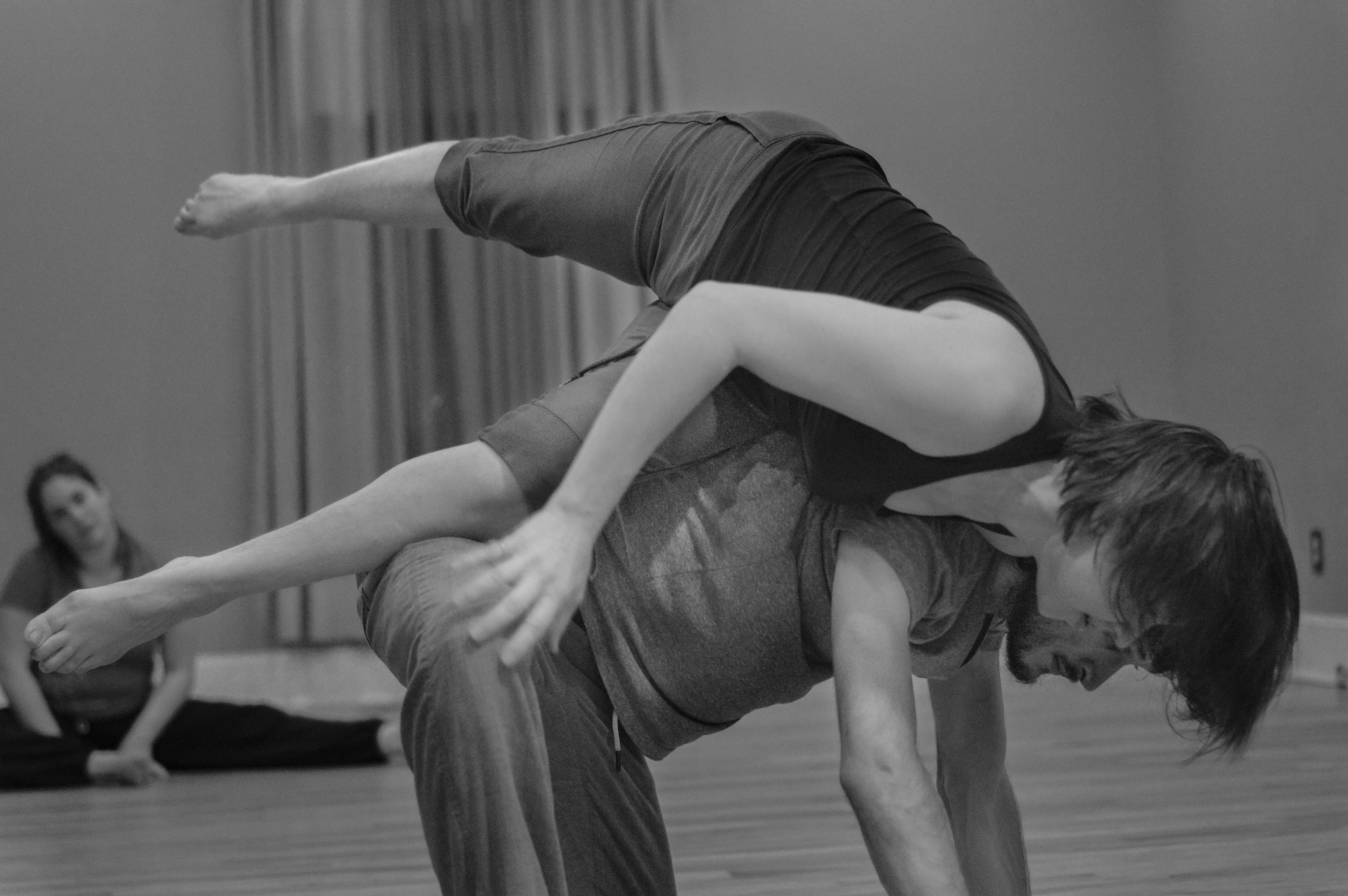As a millennial, studying visual culture has provided me with key tools to understand the network of visuals that dominates the modern, globalized world. However, I started to question how we came to think so visually abstractly to even consider a culture of visuals to exist. Some researchers argue that this stems from the legacy of Western society’s historical, active forgetting of touch. (Paterson 2005). Thus, I decided to study Contact Improvisation (CI), a dance form that focuses on touch, and use film and photography as research tool to investigate the dynamics between tactile and visual knowing in social communication.
CI has its origins in the United States during the 1970s, rising in the middle of the Cold War. It is an egalitarian dance form, in which participants reach an inner understanding of themselves and others through touch as the primary form of nonverbal communication and improvise based on their bodies’ interaction with gravity and momentum (Novack 1990). These events occur during CI jams, which last anywhere between an hour to three or four hours. Additionally, as pictured above, the common practice is to close blinds and cover mirrors to create a space obscured from the external world.
I took this photograph in the Atlanta Metropolitan Studio after eight months of practicing CI with the group. The dancers are engaging in a ‘round robin’. This is when dancers form a circle to observe improvised duets. This is one of the only moments in which the use of sight is prioritized to learn about others’ movements. I took pictures in this moment to avoid disrupting the space. In this image, we can observe the physical dynamism at play: the woman’s body is being pulled downwards by gravity, but her hand is anticipating the motion and the shift in position. Between her side and the man’s back, the point of contact is clear, but it will change location on both bodies. They use this ‘rolling point of contact’ to communicate and flow into more movements. Meanwhile, their eyes (sight) are passive but, if she were to slip, these would become handy tools for safety.
By using photography, I can assess when sight constitutes a secondary, active or passive mechanism to prevent and invite movement and interaction with another person. Additionally, due to the heightened tactile experience, the visual is deprioritized. Thus, visual discrimination and stereotyping decreases. One finds it visually insignificant if other dancers look old or young, queer or straight, big or small, or from another race and ethnicity. Such stark contrast to the visual dominant milieu makes CI a counter-cultural space. Based on this research, I argue that modern society cannot possibly become a single-sense vacuum. This is a provocative thought that makes me question in which ways the body is still active or passive whilst interacting in our predominately visual world.
Paterson, Mark. "The Forgetting of touch." ANGELAKI journal of the theoretical humanities 10, no. 3 (2005): 115-132.
Stark Smith, Nancy. “A Certain Kind of Knowing – An interview with Bonnie Bainbridge Cohen”. Contact Quarterly, Vol. 42 No. 2 (2017): 30-33.

Commentary on Rachel Tanur's Works: Dancer Rehearsing